| Towards the Wireless Future Internet -
Understanding the Role of Emerging Mobile Broadband Networks and the
Evolved Packet Core |
|
By Prof. Thomas Magedanz, Technical University of Berlin, Germany |
|
Abstract
|
The Future Internet represents a global research topic, denoting a new
omnipresent communications and service platform, which enables the smart
interconnection of an open set of sensors, devices, things, humans,
systems, data, and applications. Various application domains, such as
eHealth, eGoverment, eTransport, eEnergy, eLearning, smart / human
centric communications, etc. should be supported by such a platform.
In this context wireless broadband access represents an important factor
and the incorporation of existing and emerging network technologies will
be of fundamental importance the smooth introduction of the future
internet. Particular the starting deployment of Mobile Broadband
Networks will mark an important cornerstone in mobile network evolution
towards the future internet.
This half day tutorial will provide an overview of the Mobile Broadband
Networks and the corresponding 3GPP standards related to the Long term
Evolution (LTE) and the Evolved Packet Core (EPC), which form together
the Evolved Packet System (EPS). Major focus of this tutorial is on the
EPC concepts, architecture, components, interfaces and functional
capabilities. As the EPC provides a unified control platform for linking
different IP application platforms with various broadband wireless
access networks, the tutorial also addresses potential EPC application
domains, namely the IP Multimedia Subsystem (IMS), as well as potential
open internet service architectures. The tutorial terminates with an
introduction to the TU Berlin / Fraunhofer FOKUS OpenEPC
(www.openepc.net) software toolkit enabling rapid Future Mobile Broadband Network prototyping for
applied academic and industry research. In particular, it introduces the
new open Future Seamless Communications Playground
(www.FUSECO-Playground.org) established in Berlin, Germany in the spring
2010.
Session 1: Future Mobile Broadband Networks Overview
* Convergence: Network Evolution towards all IP
* Mobile Network Evolution
* Requirements as defined by the NGMN Alliance
* Potential Future Mobile Broadband Network services
* Related Fora & Standards (NGMN Alliance, 3GPP, LTSI)
* Service Architecture Evolution (SAE) = Evolved Packet System
(EPS) Overview
* EPS = E-UTRAN + Evolved Packet Core (EPC)
* Comparing NGN and Future Mobile Broadband Network concepts
Session 2: EPS Overview
* Introducing the 3GPP EPS Specifications
* E-UTRAN = Long-term Evolution (LTE) Overview
* 3GPP Evolved Packet Core (EPC) Overview
o EPC Motivation (= access network diversity)
o EPC Key capabilities (QoS, charging, handover, security,
IP connectivity)
o EPC architecture for LTE (MME, S-GW, PDN-GW, PCC, etc.)
o EPC architecture for other access networks
* EPC in operation
* Applications over EPC: IMS vs Internet
Session 3: Application Domains: Telecommunications / IMS vs. Web 2.0 and
beyond
* Service platforms above EPC
* IMS as common core service platform
* IMS overview: architecture, components, protocols
* IMS service example over EPC: Voice, 3Play, IPTV, etc.)
* Internet service architectures over EPC (Communities, Web 2.0,
WebTV, etc.)
* Future Mobile Broadband Network Voice Challenges and
architectural options
Session 4: Enabling Future Mobile Broadband Networks Application
Prototyping
* Motivation for open testbeds to accelerate Future Mobile Broadband technology
adoption and application prototyping
* Experiences form the Fraunhofer FOKUS open technology testbeds
and tools
* An EPC testbed toolkit for academia and industry R&D: The
OpenEPC (www.openepc.net)
* Showcase: The FUSECO Playground based on OpenEPC
(www.FUSECO-Playground.org)
Session 5: Evolution of mobile and fixed NGN toward the Future Internet
(FI)
* Definition of the Future Internet
* Related FI R&D and testbeds
* The role of NGN on the way to the FI
* Research Challenges ahead
* Questions and Answers |
|
About Speaker |
|
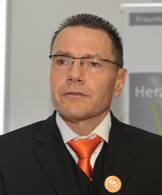 |
Thomas Magedanz (PhD) is full professor in the electrical engineering and computer sciences faculty at the Technische Universität Berlin, Germany, leading the chair for next generation networks (www.av.tu-berlin.de). In addition, he is director of the “next generation network infrastructure” division of the Fraunhofer Institute FOKUS (www.fokus.fraunhofer.de/go/ngni). In 2006, Prof Magedanz has been assigned as Extraordinary Professor at the Department of Electrical Engineering of the University of Cape Town, South Africa (www.ee.uct.ac.za).
Since more than 20 years Prof. Magedanz is working in the convergence field of fixed and mobile telecommunications, the internet and information technologies, which resulted in many international R&D projects centred around Next Generation Service Delivery Platforms prototyped in a set of globally recognised open technology testbeds provided to the international academia and industry. In 2007 Prof. Magedanz joined the European FIRE (Future Internet Research and Experimentation) Expert Group.
|
In the course of his research activities he published more than 250 technical papers/articles. In addition, Prof Magedanz is senior member of the IEEE, and editorial board member of several journals. More details can be found at: http://www.fokus.fraunhofer.de/en/ngni/contact/team/tm.html |
| |
|
Quantitative relationships between Quality of Experience and Quality of Service |
|
By Prof. Markus Fiedler, Blekinge Institute of Technology,
Sweden
|
|
Abstract |
Churn of revenue-generating but dissatisfied users has become a major
point of concern for service providers and network operators. As
services rely on interconnecting networks, service performance and thus
user satisfaction and loyalty depend on network performance.
Consequently, it is of utmost importance to understand the relationships
between user perception, captured by quantitative Quality of Experience
(QoE) parameters, and network performance, described by Quality of
Service (QoS) parameters. This talk will provide insights into
fundamental concepts of QoE and QoS and relationships between them,
formulated as partial differential equations describing changes in QoE
with respect to specific QoS parameters. A set of illustrating examples
is given. Furthermore, the different impacts of provisioning and degree
of success or failure of delivery on QoE are discussed, leading to the
so-called QoE provisioning-delivery hysteresis. This hysteresis provides
a striking motivation for employing elastic adaptation mechanisms to
available resources instead of suffering from uncontrolled data loss.
The tutorial will also present concurrent challenges in quantifying QoE. |
|
About Speaker |
|
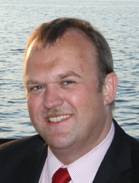 |
Markus Fiedler received his doctoral degree in electrical engineering
with focus on ICT from Universität des Saarlandes, Saarbrücken, Germany,
in 1998. Since then, he has been with Blekinge Institute of Technology,
Karlskrona, Sweden. He has been holding the Docent degree in
telecommunication systems since 2006. Within the School of Computing, he
performs and supervises research on Quality of Experience; seamless
communications; network virtualization; service chains; and networks of
the future (NF). He is leading and participating in several national and
European projects. He is serving on the Steering Board of the European
Network of Excellence Euro-NF and coordinating its specific joint
research projects.
|
| |
|
Security in Wireless Ad Hoc Sensor and Mesh Networks |
|
By Prof.
Erdal Cayirci,
University of Stavanger, Norway
|
|
Abstract |
Ad hoc networks formed by randomly deployed self-organizing wireless nodes have a wide range of applications, such as tactical communications, disaster relief operations and temporary networking in sparsely populated areas, and therefore they have been studied extensively for two decades. More recently, sensor networks have attracted interest from the research community and industry. They are more energy constrained and scalable ad hoc networks. Another form of ad hoc network, namely mesh networks, is aimed at application areas such as infrastructureless network scenarios for developing regions, low-cost multihop wireless backhaul connections and community wireless networks. Characteristics such as wireless access, mobility, rapid and random deployment make these kinds of network a very challenging field for security. Security is also a key issue in making many ad hoc application scenarios practical. Although security for these networks has been a major research field for more than a decade, there are still many challenges waiting for better solutions. Therefore, many researchers and engineers from both academia and industry continue working on this topic.
The tutorial is self-contained with regard to wireless ad hoc networking issues and introduces the security related aspects of wireless ad hoc, sensor and mesh networks, providing advanced information on security issues for this domain. It has two parts: The first introduces fundamentals and key issues related to wireless ad hoc networking. In this part, security-related issues – the issues referred to in the second part – are emphasized. In the second part, security attacks and counter measures in wireless ad hoc, sensor and mesh networks are elaborated upon. The tutorial is based on our book titled “Security in Wireless Ad Hoc and Sensor Networks,” published by Wiley and Sons in 2009. |
|
About Speaker |
|
 |
Erdal Cayirci graduated from Army Academy in 1986 and from Royal Military Academy, Sandhurst in 1989. He received his MS degree from Middle East Technical University, and a PhD from Bogazici University both in computer engineering in 1995 and 2000, respectively. He retired from the Army when he was a colonel in 2005. He was an Associate Professor at Istanbul Technical University, Yeditepe University and Naval Sciences and Engineering Institute between 2001 and 2005. Also in 2001, he was a visiting researcher for the Broadband and Wireless Networking Laboratory and a visiting lecturer at the School of Electrical and Computer Engineering, Georgia Institute of Technology. He is currently Chief, CAX Support Branch in NATO's Joint Warfare Center in Stavanger, Norway, and also a professor in the Electrical Engineering and Computer Science Department of University of Stavanger. His research interests include sensor networks, mobile communications and constructive simulation.
|
Professor Cayirci has acted as an editor of the journals IEEE Transactions on Mobile Computing, AdHoc Networks (Elsevier Science) and ACM/Kluwer Wireless Networks, and has guest edited four special issues of Computer Networks (Elsevier Science), AdHoc Networks (Elsevier Science) and Kluwer Journal on Special Topics in Mobile Networking and Applications (MONET).
He received the “ 2002 IEEE Communications Society Best Tutorial Paper” Award for his paper titled “A Survey on Sensor Networks” published in the IEEE Communications Magazine in August 2002, the “Fikri Gayret” Award from Turkish Chief of General Staff in 2003, the “ Innovation of the Year” Award from Turkish Navy in 2005 and the “Excellence” Award in ITEC 2006.
He co-authored two books titled as “Security in Wireless Ad Hoc and Sensor Networks,” and “Computer Assisted Exercises and Training: A Reference Guide” both published by John Wiley & Sons in 2009. |
|
|
Field Solvers and Parasitic Extraction for Advanced Analog and Digital Designs |
|
By Dr. Khoa Nguyen, Vice-President, Silicon Frontline, USA |
|
Abstract |
The tutorial covers challenges and solutions of RC extraction for advanced high-speed digital and precision analog circuits.
A need for accurate, reliable, and efficient capacitance extraction will be illustrated using examples, where 3D metal shapes, complicated
BEOL (Back End Of Line) stack, and various manufacturing and other effects dominate design parasitic. A comparison of various
extraction tools including pattern-matching extractors, and mesh-based and mesh-less field solvers is included.
|
|
About Speaker |
|
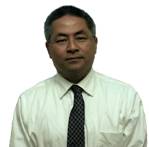 |
Khoa Nguyen, Vice President of Technical Marketing and Applications at Silicon Frontline, a leading provider of 3D parasitic extraction. Prior to joining Silicon Frontline, Mr. Khoa Nguyen served as Director of Product Engineering for Extraction and Analysis Products at Cadence Design Systems. Prior to Cadence Design, Khoa served as Senior Manager at Simplex Solutions. Mr. Khoa Nguyen has more than 15 years experience in the area of parasitic extraction and analysis. |
|
|
Wireless Sensor Networks for Environmental Monitoring
|
|
By
Prof.
Kris Steenhaut, VUB and Erasmushogeschool Brussel, Belgium
and Dr. Yann-Aël Le Borgne, Computational Modeling lab (COMO) and Informatics and Electronics Group (ETRO), Vrije Universiteit Brussel, Belgium. |
|
Abstract |
Wireless Sensor Networks (WSNs) form an emerging class of networks, which have driven numerous research efforts in the last decade. They are composed of numerous tiny wireless sensor nodes, embedded within an environment, which collaborate in order to extract information of interest. Such networks enable to monitor our world at an unprecedented spatiotemporal resolution, for applications in domains as diverse as ecology, industry, medicine, or defense. The very limited energy, communication, and computational resources of the sensor nodes however call for the design of new networking and information processing strategies.
The tutorial provides an overview of the technology and its applications, and outlines the key challenges faced in operating such networks. In a second stage, it discusses some of the solutions which have been brought to the field, with an emphasis on algorithmic approaches where routing and information extraction are jointly optimized. The discussion is supported by case studies of greenhouse monitoring and urban acoustic pollution monitoring, in which our lab is currently involved. |
|
About Speaker |
|
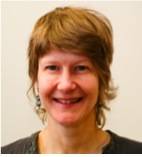 |
Kris Steenhaut obtained her PhD in engineering sciences from Vrije Universiteit Brussel (VUB) in 1996. Currently she is Professor in telecommunications at VUB and at Erasmushogeschool Brussel, Belgium. Her research interests include the design, implementation and evaluation of sensor networks and the design of routing/protection strategies for optical networks. She cooperates or takes a leading role in European ITEA consortia such as ESNA (European Sensor Network Architecture) and ISN (Interoperable Sensor Networks) and in Institutional University Cooperation projects with Vietnam and Cuba. She is also a driving force in several fundamental research projects of the FWO (National Science Foundation) and in several strategic national research projects on sound/air pollution monitoring by means of heterogeneous sensor networks. Kris Steenhaut is a member of the ETRO department of VUB and an IEEE member. |
 |
Yann-Aël Le Borgne obtained his PhD in Computer Science in 2009 from the Machine Learning Group of the Université Libre de Bruxelles, Belgium, where he was granted a Marie-Curie fellowship from the European Commission. His main interests concern the design of distributed machine learning techniques for energy-efficient data processing in WSNs. He is currently researcher at the Computational Modeling lab (COMO) and Informatics and Electronics Group (ETRO) of the Vrije Universiteit Brussel, Belgium. |
|
|
Cognitive radio networks : a top-down analysis through European research Projects |
|
By Prof. Van Tam Nguyen, Telecom ParisTech, France
|
|
Abstract |
Cognitive Radio (CR) proposed by J. Mitola III in 2000, has first been identified as a preferred technology for high-end applications in the military and public safety domain. Then, a series of research projects in the Seventh Framework Programme (FP7) of the European Community has been investigating means for adapting CR concepts to cellular and short-range communication systems. The involved industrial, regulatory and academic partners are studying the CR approach with the prospect of a hugely increased level of spectral efficiency and improved overall system capacity exploitation, among others, thanks to
- The dual exploitation of spectrum by applying opportunistic spectrum usage without harmful interferences;
- A Mobile Device (MD) being partially or fully aware of its heterogeneous context and dynamically adapting its parameters such that its operational objectives are reached in an optimum way;
- The related networks are sufficiently intelligent about radio resources, protocols and are dynamically self-organizing.
This tutorial has two parts. In the first part, we will present an overview of different FP7 research projects on cognitive radio networks, point out some big challenges, especially how to split the intelligence between cognitive terminals and cognitive networks; how to distribute cognitions between layers; what is the difference between opportunistic spectrum use, dynamic spectrum access and smart, context aware radio. In the second part, we will focus on hardware implementation issues, especially on Software Defined Radio (SDR) architecture for MD and flexible hardware implementation in radio frequency domain, interfaces as well as baseband. |
|
About Speaker |
|
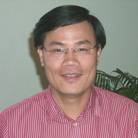 |
Van Tam Nguyen received the Diplôme d’Ingénieur from Ecole Supérieure d'Electricité (Supelec - www.supelec.fr) and a M.Sc. degree in automatic and signal processing from University Paris Sud (www.u-psud.fr) in 2000, and a Ph.D. degree in Communications and Electronic from Ecole Nationnale Supérieure des Télécommunications (Telecom ParisTech- www.telecom-paristech.fr) in 2004.
From 2000 to 2005 he was a research engineer at Schlumberger and Telecom ParisTech working mainly on European Project SPRING (Scientific Multidisciplinary Network for metering – IST-1999-12342). In 2005 he joined Telecom ParisTech as an Associate Professor. |
His main research interests are in the areas of cognitive radio networks, software defined radio, wireless sensor network, future wireless communication system. In particular, his research focuses on reconfigurable radio interface, digital enhanced RF transceiver, digital/analog/radio frequency partioning, mixed signal interference cancellation, sensing algorithm for cognitive radio, algorithms for MIMO spectrum sensing, cooperation sensing with reduced delay in relaying decisions and digital oriented architecture for SoC sensor.
He has actively involved in many industrial projects, national and European research projects. He is currently Institut Telecom (Telecom ParisTech, Telecom Bretagne, Telecom ParisSud) team leader for the SACRA FP7 project. |
| |
|
Complete Technology in computational electromagnetic |
|
By Dr. Linus Lau
Computer Simulation Technology (CST)
University of Machester Institute of
Science and Technology |
|
Abstract |
|
Modern electronic systems are showing a constant growth in
complexity combining with faster signal transmission rates and
higher operating frequencies. Having several revolutions in
prototyping a design often becomes too expensive in terms of
dollar and time cost. Consequently, a full 3D EM simulation tool
which helps providing better insight and understanding of the EM
effects within the system becomes an industrial standard in
shortening the design cycle of a product. As a designer or
researcher dealing with high frequency components you will get a
broad overview about possible simulation methods, learn what
important points to consider during a simulation and how to
apply this knowledge for a concrete design of typical high
frequency structures. |
|
About Speaker |
 Linus
Lau obtained First Class honor BEng in Mechatonics engineering,
Master of research in Mechanical Engineering and PhD in
Microwave Engineering from University of Machester Institude of
Science and Technology (UMIST) in between 1995 – 2003. He then
returns to Malaysia joining Intel Penang as a Senior Test module
Development Engineer (2004-2005). He was working in the area of
Test module development for Intel Centrino WIFI Transceiver
chipset; conducting performance study of RF test module using 3D
EM simulation tool and setting up measurement verification study
on test related challenges, i.e Signal Integrity, EMC, thermal
and mechanical test. He is now attached to Computer Simulation
Technology (CST), the market leader in 3D EM Time domain
simulator as the main technical consultant for South East Asia
region. He’s responsible for both business development and
Technical support for customers in this region and currently
base in Kuala Lumpur, the capital of Malaysia Linus
Lau obtained First Class honor BEng in Mechatonics engineering,
Master of research in Mechanical Engineering and PhD in
Microwave Engineering from University of Machester Institude of
Science and Technology (UMIST) in between 1995 – 2003. He then
returns to Malaysia joining Intel Penang as a Senior Test module
Development Engineer (2004-2005). He was working in the area of
Test module development for Intel Centrino WIFI Transceiver
chipset; conducting performance study of RF test module using 3D
EM simulation tool and setting up measurement verification study
on test related challenges, i.e Signal Integrity, EMC, thermal
and mechanical test. He is now attached to Computer Simulation
Technology (CST), the market leader in 3D EM Time domain
simulator as the main technical consultant for South East Asia
region. He’s responsible for both business development and
Technical support for customers in this region and currently
base in Kuala Lumpur, the capital of Malaysia |
|
Copyright © 2006, HUT-ICCE Biennial International Conference on Communications and Electronics
Powered by TMTSys 2.0 |
|
|

